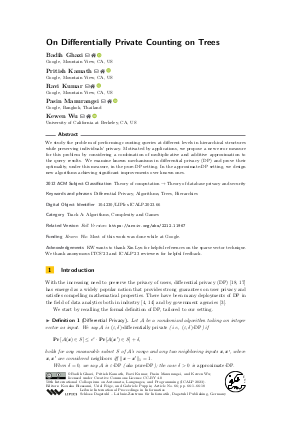LIPIcs.ICALP.2023.66.pdf
- Filesize: 0.96 MB
- 18 pages

 Creative Commons Attribution 4.0 International license
Creative Commons Attribution 4.0 International license

We study the problem of performing counting queries at different levels in hierarchical structures while preserving individuals' privacy. Motivated by applications, we propose a new error measure for this problem by considering a combination of multiplicative and additive approximation to the query results. We examine known mechanisms in differential privacy (DP) and prove their optimality, under this measure, in the pure-DP setting. In the approximate-DP setting, we design new algorithms achieving significant improvements over known ones.



































Feedback for Dagstuhl Publishing